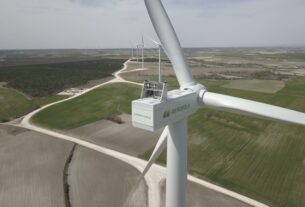France – According to the International Energy Agency’s latest annual market report, the amount of electricity generated worldwide from coal is surging to a new annual record in 2021, undermining efforts to reduce greenhouse gas emissions and potentially putting global coal demand on course for an all-time high in 2022.
According to the IEA’s Coal 2021 report, global coal power generation rose by 9 percent in 2021 to an all-time high of 10,350 terawatt-hours after falling in 2019 and 2020. Economic growth has pushed electricity demand much higher than low-carbon supply can keep up, which has fueled the rebound this year. As natural gas prices have risen sharply, coal power demand has also increased.
There will be a 6 percent increase in global coal demand in 2021 for all uses, including cement and steel production. However, it won’t surpass the previous highs set in 2013 and 2014. Because of weather patterns and economic growth, coal consumption could hit all-time highs in 2022 and remain at that level for the next two years, highlighting the need for fast and strong policy action.
“Coal is the single largest source of global carbon emissions, and this year’s historically high level of coal power generation is a worrying sign of how far off track the world is in its efforts to put emissions into decline towards net zero,” said IEA Executive Director Fatih Birol. “Without strong and immediate actions by governments to tackle coal emissions – in a way that is fair, affordable and secure for those affected – we will have little chance, if any at all, of limiting global warming to 1.5 °C.”
Despite a slowdown at the end of the year, coal power is expected to grow by 9% in 2021 in China, home to more than half of the world’s coal-fired electricity generation. It is expected to grow by 13% in India. These new highs would be achieved in both countries as they continue to expand their solar and wind power capacities. This year, coal power generation in the US and EU is expected to rise by nearly 20%, but that is not enough to push it past 2019 levels. Slow electricity demand growth and rapid expansion of renewable power are expected to lead to a decline in coal use in those two markets next year.
An annual drop of 4.4 percent is the largest in decades, but it is far less than what was expected at the height of the pandemic’s lockdowns, according to a new report. There was a wide disparity between regions. In China, where the economy began recovering much earlier than elsewhere, coal demand increased by 1% for the entire year, whereas it decreased by nearly 20% in the US and EU and by 8% in India and South Africa.
Over the past two years, coal prices have taken a rollercoaster ride. Supply cuts helped stabilize the market in the second quarter of 2020, when prices dropped to USD 50 per tonne, but by the end of the year, economic activity and coal demand in China had pushed prices higher. Demand outstripped supply in China, the world’s coal price leader, as well as supply disruptions and rising natural gas prices around the world in 2021, raising prices even higher. As recently as early October 2021, the price of imported thermal coal in Europe was at a record high of USD 298 per tonne. The Chinese government’s quick policy intervention to stabilize the market had an immediate impact on prices. European prices had fallen below USD 150 per tonne by the middle of December.




